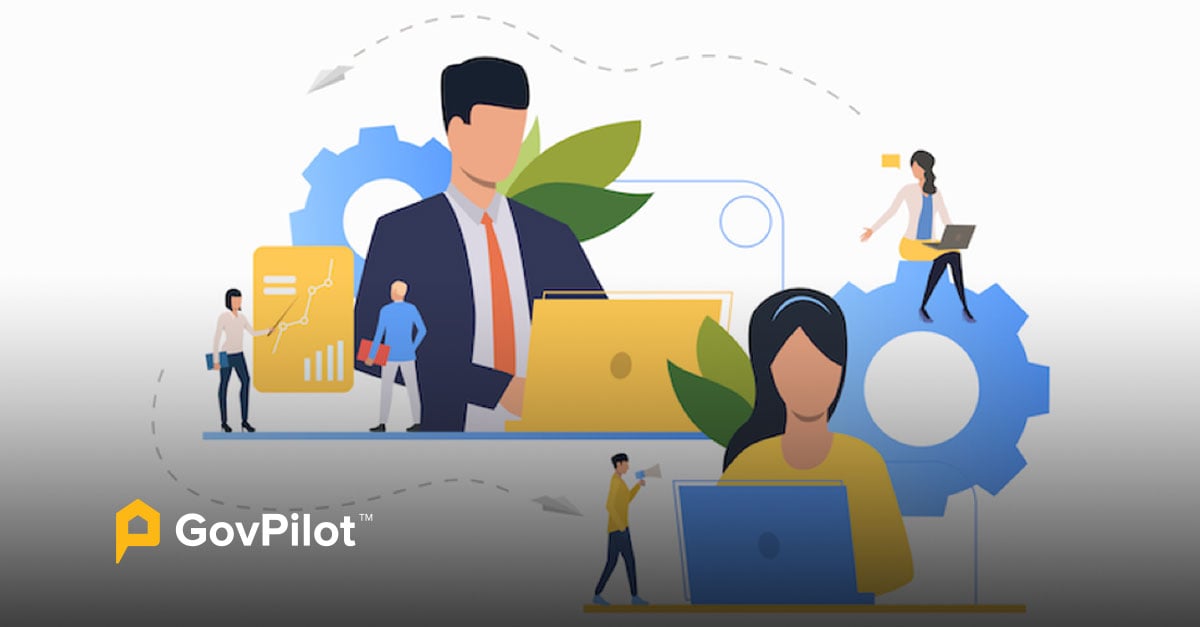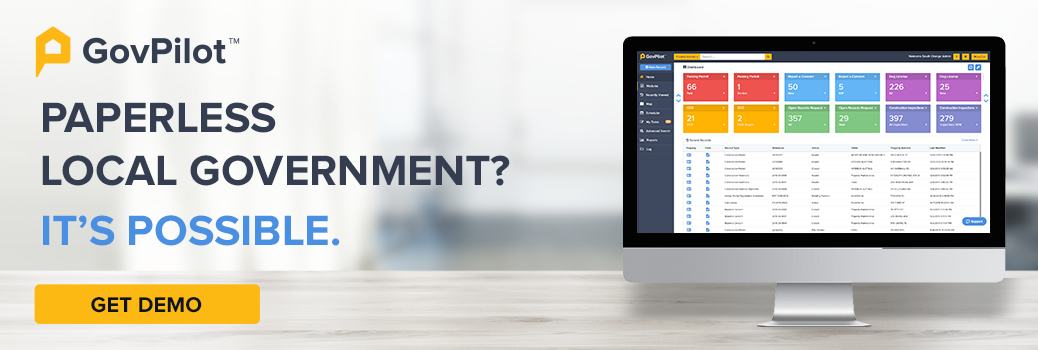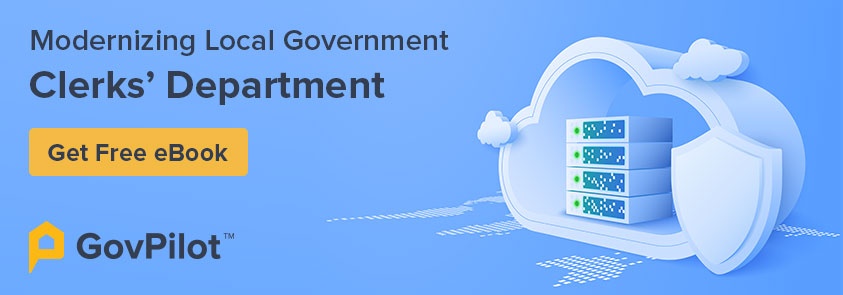Local governments are constantly ordering new materials and equipment to maintain and upgrade local infrastructure and perform government services. Yet, despite the critical role the global supply chain and shipping logistics play in maintaining your community and completing infrastructure projects on time, the unfortunate reality is that many localities are using antiquated logistics workflows and technology for keeping track of the status of government purchases.
In this guide, we’ll highlight why local governments need a modern logistics strategy, how they can improve on existing purchasing workflows, and how government management software can help with asset and supply chain management across departments. Additionally, you’ll gain insight into performing supply chain assessments to mitigate risk.
Why Do Local Governments Need a Supply Chain Management Strategy?
Every local government taps into private government contractors for acquiring critical materials for building new infrastructure, maintaining existing infrastructure, and offering government services.
With the government’s obligation to get local infrastructure projects done as cheaply and efficiently as possible, supply chain management is integral to getting the materials needed to complete projects on time. Logistics also plays a critical role to local health and safety, as supply chain disruptions in food and medical distribution to your community would put vulnerable community-members at risk.
Modern logistics workflows make it easier for local governments to order materials, track order statuses, and form accurate timelines for infrastructure project completion and streamlined government services.
What Do Local Government Logistics Strategies Need to Consider?
Modern logistics technology and workflows make it easier to track down and order products and materials as needed from private-sector partners.
Here are key considerations to apply in your local government for better supply chain workflows:
1. Keep Private Partner Contacts Organized
Every government department has products that they need to order. For simplified ordering of materials as needed, contact lists can be created for government contractors and stored in the cloud.
Whenever a vendor fills out a contact form, they can be labeled in your government data storage by department and the type of service the contractor provides. Better digital public data management of government contractors can make for simplified access to contacts when comparing businesses and placing orders for a particular product or material.
2. Organize Government Budgets and Financial Accounting
As orders are placed for various products and materials, your local government needs to have processes in place for tracking how the department’s budget is being allocated and where government funds are being spent.
With GovPilot purchasing department software, all government purchases and related shipping costs will be updated in the accounting system. Related invoices and receipts will be stored in the cloud.
Learn more about Modern Government Budgeting.
3. Constant Asset Tracking
Keeping track of existing assets is important for modern supply chain management. As existing infrastructure decays with time, your local government can use asset tracking technology to make informed decisions around replacing existing infrastructure. Notes pertaining to inspection forms and purchasing information can be pulled up in moments for an asset via your local GIS map on the government cloud.
Here are Tips for Better Government Asset Management.
4. Prioritize Agriculture and Public Health Supply Chains
Food and medication are integral to keeping your citizens healthy and not hungry.
Public health data management allows for health departments to keep track of medications, health testing kits, and health technology purchases as they are in the supply chain. Modern government agriculture management allows for integrated government communications channels that can be used to converse with local and national agriculture businesses about food being distributed to your community to ensure supply chain disruptions don’t occur.
How Can Local Health Departments Improve Health Testing? Consider these tips beyond just ordering kits.
5. Collect Government Logistics Data
Your local government KPIs should include goals around infrastructure project turnaround times. Ask questions like the following to hold government workers accountable to get essential materials on time:
- When is the absolute latest we need to have this project completed?
- When do we need this essential material shipped by to keep to our schedule?
Using government analytics, counties and municipalities can keep track of how accurate project timelines are turning out to be, as well as which products have been ordered, how long they’re taking to arrive, etc.
6. Improve Communications with Logistics Partners
Infrastructure projects almost always involve multiple departments at the local level, and in many instances involvement from state and national governments as well as private contractors.
If a disruption occurs in the supply chain that will impact many public and private entities, embracing government software with digital communications channels will allow the relevant officials to be notified from the supplier or internal official with the update.
Here are more considerations for Improving Local Government Communications.
7. Manage Public Inventory
Public inventory management can keep track of assets across departments and their status. Data is entered into a cloud-based system that can be used to forecast future demand and inventory as well as automate re-purchasing.
Keep an eye on materials saved in storage before ordering more unnecessarily. Get automated reminders when an important item regularly used by the government is low on stock.
8. Track Orders in Real Time
Shipping delays could cost your locality precious time needed to complete an infrastructure project on schedule. Any materials purchased for digital or physical infrastructure in your community needs to be tracked regularly to ensure they’re arriving on schedule.
When a purchase is made, many logistics organizations offer real-time tracking. If not, relevant government officials should regularly inquire with private partners to confirm on time arrival and make timeline adjustments if delays occur.
9. Prioritize Cybersecurity for Government IT Systems
Global supply chains have been hit hard by an influx of cyber attacks against private and public sector entities. Atlanta, for example, was unable to access government technology for several weeks after a cyber attack breached their infrastructure. Not only were they unable to perform critical services, but they also couldn’t keep track of existing purchases in the supply chain, make new purchases, or keep track of government budgets.
Taking action to Modernize Your Local Government Cybersecurity needs to be a critical component of your Local Government IT Strategy to keep logistics data and government services fully functioning at all times.
Here are more Lessons From Past Government Data Breaches and Federal Cybersecurity Grants to consider for mitigating hacks.
10. Form an Emergency Management Strategy
Lack of access to vital products and services was a key challenge governments and their citizens faced during the pandemic. Disruptions in the global supply chain due to pandemic related lockdowns continue to have an impact on logistics today.
Your local government’s emergency management department needs to consider potential threats that could reduce access to goods such as food, medications, and materials for infrastructure management and mitigate these threats with proper planning.
Here are emergency management tips for various types of natural disasters:
- Local Government Disaster Preparedness Planning
- Local Government Wildfire Mitigation & Response Strategy
- Local Government Flooding Mitigation & Response Strategy
- Local Government Tornado Mitigation & Response Strategy
- Local Government Landslide Mitigation & Response Strategy
- Local Government Winter Storm Mitigation & Response Strategy
How Can Local Governments Regular Supply Chain Assessments?
Local governments need to perform regular supply chain assessments to mitigate risk and vulnerabilities.
Here are key steps to conducting a government supply chain assessment:
1. Identify the Scope of Your Assessment:
Prioritize which goods and services are the highest priorities in your department’s procurement.
2. Map the Supply Chain
Consider which suppliers are involved at each stage for your highest priority purchases.
3. Assess Supplier Risk
Evaluate factors like a supplier’s geographic location, financial stability, labor practices, and impact on the environment and local sustainability.
4. Identify Potential Disruptions
Consider things that could cause a disruption in the supply chain such as natural disasters, regulatory changes, or political instability.
5. Develop Contingency Plans
Prioritize contingency planning to mitigate risks and potential disruptions.
6. Monitor the Supply Change & Make Updates
Continually monitor the supply chain to identify new risks and make changes to your assessment as needed.
Modernize Local Government Logistics
Local governments have constant shipments of materials needed to complete infrastructure projects and provide government services. In order to ensure government continuity, local governments need to have a firm understanding of their full supply chain and perform regular assessments to determine the risk that could cause critical products and materials to not arrive on time.
To learn more about how GovPilot government procurement and purchasing software can make for easier supply chain management for county and municipal governments, book a free demo.
Government Logistics FAQs
How Does Procurement Software Help Local Government Supply Chains?
Local governments are constantly ordering new materials and products to keep progress happening within their community.
Procurement software for local governments can make supply chain management tasks easier with automation and digital storage. Benefits of the technology include:
- Contract management: store vendor contracts in one easy-to-navigate digital platform.
- Vendor applications: form a digital contact list with all vendors across departments.
- Virtual RFPs and bid management: send vendors an instant notification requesting proposals whenever a new government project kicks off and materials / services are needed. Accept or decline bids virtually.
- Inventory management: keep track of the quantity in stock of essential products, materials, etc. to ensure products are reordered before supplies run out.
As explained by the Acquisition Chief Information Officer at the U.S. Dept. of Defense in conversation with Exiger government solutions, "We were able to change the game on [government-related] supply chain using commercially available tools." The aforementioned list of government supply chain software solutions have revolutionized the ways in which government entities at all levels can expedite shipping of essentials materials.
What is Government Supply Chain Management?
Government supply chain management is the process of ordering goods and services needed to perform government services and infrastructure projects. Beyond procurement, supply chain management for governments involves inventory management, receiving deliveries, and distributing newly acquired goods to where they’re needed.
Sources








